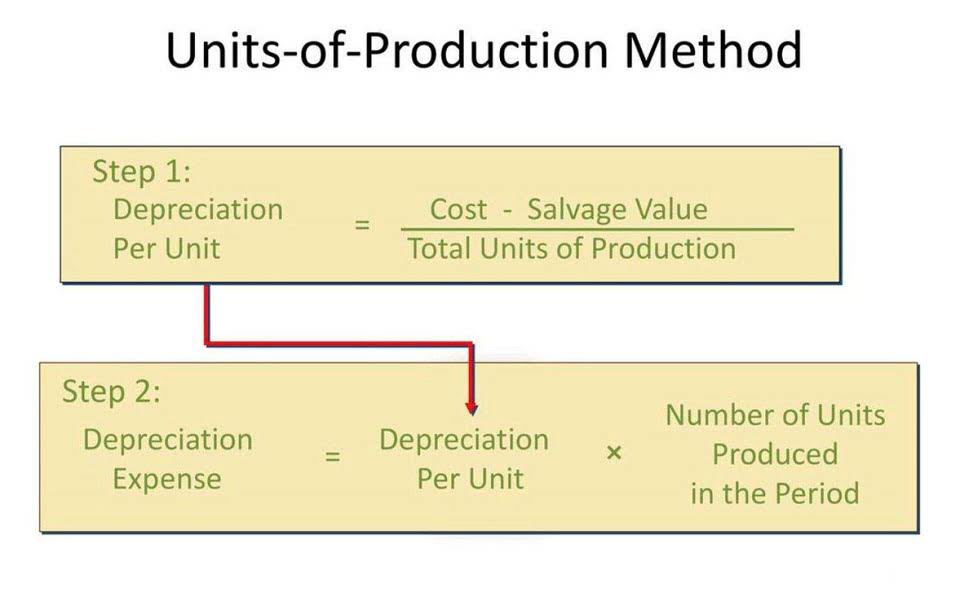Content

We’ll go over a couple of the important ones so you can decide for yourself it’s a good fit. In closing, the estimated depreciation expense is calculated to be $10 million for fiscal year ending 2021. At the end of fiscal year 2020, the company purchased a fixed asset, i.e. capital expenditure (Capex), for $250 million. Finance Strategists is a leading financial education organization that connects people with financial professionals, priding itself on providing accurate and reliable financial information to millions of readers each year.
Be sure to review the other methods used to calculate depreciation and consult with an accountant on which one will work best for your specific business needs. Other methods include the modified accelerated cost recovery system (MACRS), the straight-line method, declining balance depreciation, and the sum-of-the-years’ digits method. According to management, the fixed asset has an estimated salvage value of $50 million, and the total production capacity, i.e. the estimated number of total production units, is estimated at 400 million units. Utilizing units of production depreciation requires more work, but it offers you a more accurate picture of the actual cost of maintaining your equipment.
What is the approximate value of your cash savings and other investments?
Be sure to review our FAQs for additional information on issues such as credit and late payment implications. These disclosures are provided to you for information purposes only and should not be considered legal advice. Use of this service is subject to this site’s Terms of Use and Privacy Policy. Before you begin, you will need to gather several pieces of information such as, the cost of the asset and the estimated number of units expected to produce over its useful life. Now that we have gone over some of the important key terms, we can start to explain the formula used for the unit of production method and how it may be useful to your business. The decrease in the value of an asset over its lifetime is known as depreciation.
To use this method, the owner must elect exclusion from MACRS by the return due date for the tax year the property is initially placed into service. Depreciation is a fundamental challenge faced by businesses across various industries. As assets age and wear down over time, their value decreases, impacting the overall financial health of a company. Traditional depreciation methods often fall short in accurately reflecting the true value of these assets, leading to misleading financial statements. However, we acknowledge the significance of this issue and are committed to presenting you with a solution that will address this problem head-on.
Sum-of-Year’s Digits Depreciation Method
It is the most accurate method for charging depreciation, since this method is linked to the actual wear and tear on assets. However, it also requires that someone track asset usage, which means that its use is generally limited to more expensive assets. Also, you need to be able to estimate total usage over the life of the asset in order to derive the amount of depreciation to recognize in each accounting period.
- It is appropriate for figuring out depreciation on equipment and assets with significantly variable utilization, including delivery vehicles and machinery.
- If the machine produces 10,000 units in the first year, the depreciation for the year will be $20,000 ($2 x 10,000 units).
- This will in turn lead you to prepare an appropriate budget for your business operations.
- Depreciation refers to the decrease in the assets value because of the effect of time, wear and tear, obsolescence because of advancements in technology, etc.
- Long-term, it’s also doubtful that the depreciation expenditure reported would differ significantly from the amount recorded using the straight-line technique, which is far more practical and straightforward to compute.
If you think the unit of production method is your best option, you have to elect exclusion from the modified accelerated cost recovery system (MACRS) for the tax year the asset is originally acquired. MACRS is the standard method set by the IRS to depreciate assets for tax purposes. This method is useful when you need to show depreciation over longer periods of time. Faster acceleration allows you to deduct a greater amount in the first few years of an asset’s life and proportionately less later. The unit of production method plays a vital role in the calculation of depreciation of assets owned by a company. For specific years in which an asset is put into use and have more unit productions, a company can claim higher depreciation deductions.
units-of-production method
When the equipment is also less production, lower depreciation deductions can be claimed. The unit of production method also enables a business estimate is loss and gains for a period of time. Compared to most other depreciation techniques, the units of production depreciation method requires more work to compute. You cannot set up an automatically posted depreciation record in your accounting software since you must modify the computation from one period to the next based on the asset’s usage.
Then, multiply this figure by the number of units of goods or services produced during the accounting period to find the period’s depreciation expense. If the estimated number of hours of usage or units of production changes over time, incorporate these changes into the calculation of the depreciation cost per hour or unit of production. A change in the estimate does not impact depreciation that has units of production method definition already been recognized. Therefore, a change in estimate does not alter the financial statements for prior periods. This method can be time-consuming, so it’s typically used for more expensive assets because it requires that you track usage. Most tangible assets (besides land) that are used to operate a business can be used to show depreciation, such as buildings, vehicles, machinery, and equipment.










